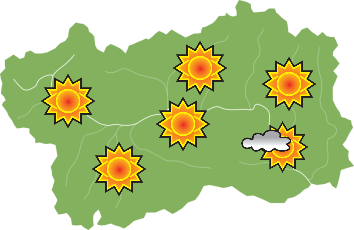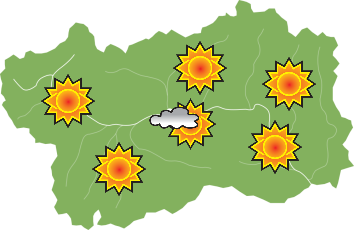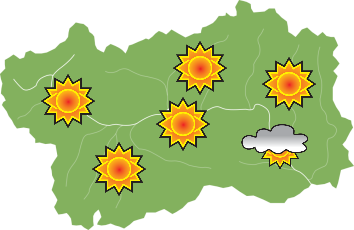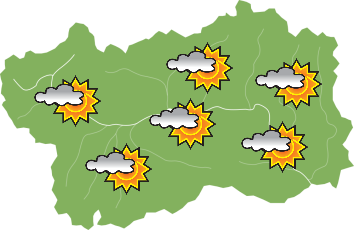Parish Church of Saint-Maurice
Località: Sarre
The visit to the parish museum and the frescoes in the apse
- second Saturday of the month from 3pm to 5pm
- or by reservation by calling the numbers:
+39 329 0610804
+39 389 0756575
+39 340 8905301
Contatti
The parish church of Saint-Maurice, built in 1643 and extended in 1896, reveals the ancient origins of the bell-tower from the Romanesque period, which was probably built around the XI century.
The semicircular apse remains of the ancient church where it is possible to admire the remarkable frescoes attributed to the workshop of Giacomino da Ivrea, made around 1430.
At the center of the basin, Christ Pantocrator in mandorla surrounded by the symbols of the four evangelists. On the left side, the figure of Saint Maurice on horseback and the coats of arms of Bishop Oger Moriset, who commissioned the pictorial cycle, and of William of Monthey, prior of Sainte-Hélène, on whom the parish church of Sarre depended until 1573. On the piers of the arch triumphal, on the left, the Man of Sorrows (Ecce Homo), on the right, the prophet Micah, Saint Simon and fragments of figures of apostles and prophets.
Over time, the church underwent substantial changes, especially at the end of the 19th century, when on the initiative of the parish priest Thomas Lale Murix of Saint-Pierre it was lengthened by 5 meters and raised by approximately 1.20 metres.
In the premises of the museum of sacred art of the church of Saint-Maurice, objects of sacred art are kept, such as wooden sculptures, jewelery and fabrics, which come from the chapels of Ville-sur-Sarre, Bellun, Champé as well as from the church itself.
The exhibition is full of pieces of great artistic value. Among the most valuable works:
- the colored wooden statue of Saint Maurice on horseback, from the early 15th century, in walnut, by the sculptor from Moron (Saint-Vincent), one of the rare non-pedestrian representations of the Saint;
- the splendid painted wooden statue of Swiss-German sculpture (perhaps Lucerne), from the 14th-15th century, unique among the Pietàs in the Aosta Valley for its verticality;
- among the goldsmith objects, dating from the 14th to the 17th century, three processional crosses and numerous finely crafted gilded silver chalices and three reliquaries, one from the priory of Sainte-Hélène-de-Sinçod in gilded copper.
See the 360° image of the interior here










